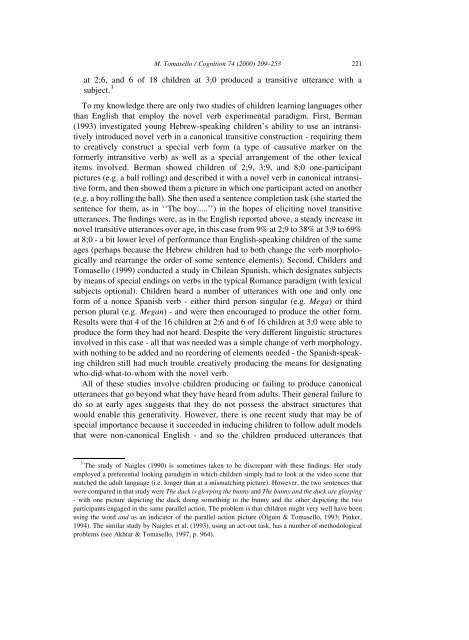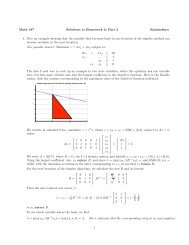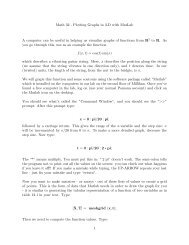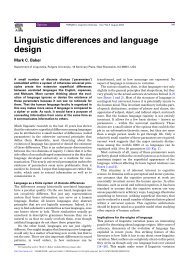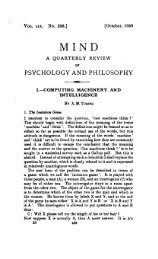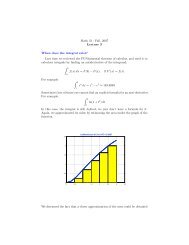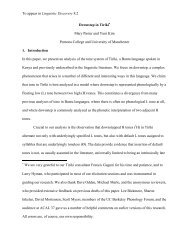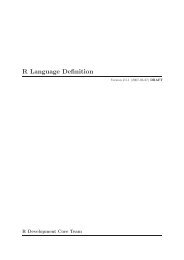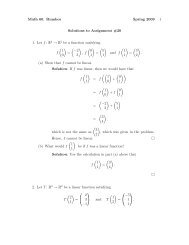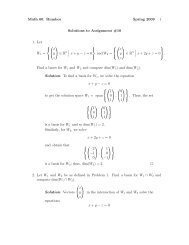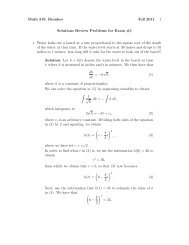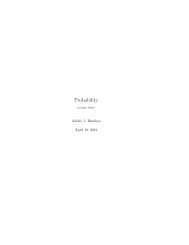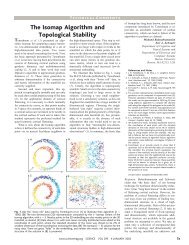Tomasello
Tomasello
Tomasello
You also want an ePaper? Increase the reach of your titles
YUMPU automatically turns print PDFs into web optimized ePapers that Google loves.
M. <strong>Tomasello</strong> / Cognition 74 (2000) 209±253 221at 2;6, and 6 of 18 children at 3;0 produced a transitive utterance with asubject. 3To my knowledge there are only two studies of children learning languages otherthan English that employ the novel verb experimental paradigm. First, Berman(1993) investigated young Hebrew-speaking children's ability to use an intransitivelyintroduced novel verb in a canonical transitive construction - requiring themto creatively construct a special verb form (a type of causative marker on theformerly intransitive verb) as well as a special arrangement of the other lexicalitems involved. Berman showed children of 2;9, 3;9, and 8;0 one-participantpictures (e.g. a ball rolling) and described it with a novel verb in canonical intransitiveform, and then showed them a picture in which one participant acted on another(e.g. a boy rolling the ball). She then used a sentence completion task (she started thesentence for them, as in ``The boy.....'') in the hopes of eliciting novel transitiveutterances. The ®ndings were, as in the English reported above, a steady increase innovel transitive utterances over age, in this case from 9% at 2;9 to 38% at 3;9 to 69%at 8;0 - a bit lower level of performance than English-speaking children of the sameages (perhaps because the Hebrew children had to both change the verb morphologicallyand rearrange the order of some sentence elements). Second, Childers and<strong>Tomasello</strong> (1999) conducted a study in Chilean Spanish, which designates subjectsby means of special endings on verbs in the typical Romance paradigm (with lexicalsubjects optional). Children heard a number of utterances with one and only oneform of a nonce Spanish verb - either third person singular (e.g. Mega) or thirdperson plural (e.g. Megan) - and were then encouraged to produce the other form.Results were that 4 of the 16 children at 2;6 and 6 of 16 children at 3;0 were able toproduce the form they had not heard. Despite the very different linguistic structuresinvolved in this case - all that was needed was a simple change of verb morphology,with nothing to be added and no reordering of elements needed - the Spanish-speakingchildren still had much trouble creatively producing the means for designatingwho-did-what-to-whom with the novel verb.All of these studies involve children producing or failing to produce canonicalutterances that go beyond what they have heard from adults. Their general failure todo so at early ages suggests that they do not possess the abstract structures thatwould enable this generativity. However, there is one recent study that may be ofspecial importance because it succeeded in inducing children to follow adult modelsthat were non-canonical English - and so the children produced utterances that3 The study of Naigles (1990) is sometimes taken to be discrepant with these ®ndings. Her studyemployed a preferential looking paradigm in which children simply had to look at the video scene thatmatched the adult language (i.e. longer than at a mismatching picture). However, the two sentences thatwere compared in that study were The duck is glorping the bunny and The bunny and the duck are glorping- with one picture depicting the duck doing something to the bunny and the other depicting the twoparticipants engaged in the same parallel action. The problem is that children might very well have beenusing the word and as an indicator of the parallel action picture (Olguin & <strong>Tomasello</strong>, 1993; Pinker,1994). The similar study by Naigles et al. (1993), using an act-out task, has a number of methodologicalproblems (see Akhtar & <strong>Tomasello</strong>, 1997, p. 964).


